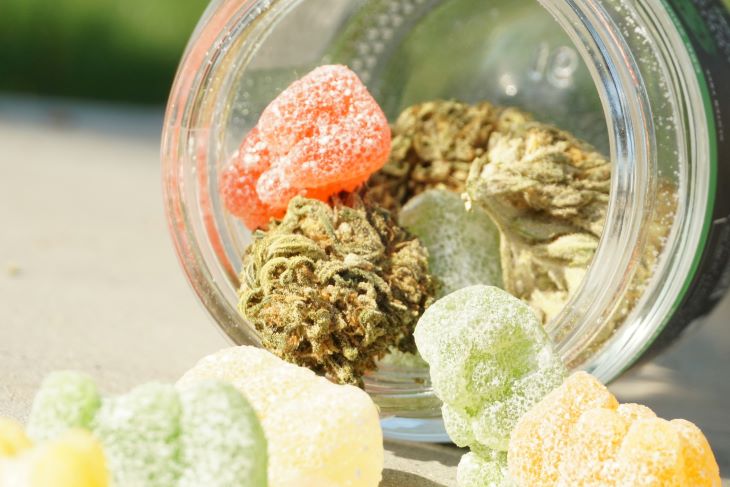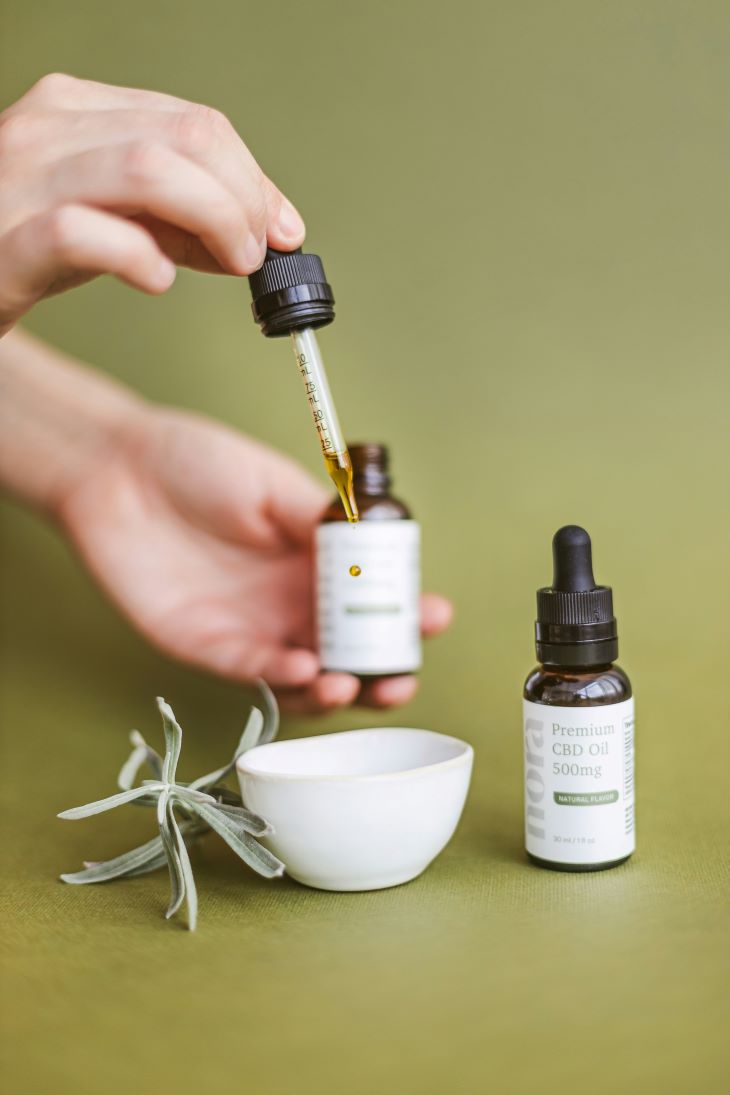Cannabis-infused products, such as edibles and oils, have surged in popularity among medical marijuana patients seeking alternative methods of consumption. As more patients incorporate these products into their treatment regimens, grasping the intricacies of shelf life management becomes increasingly vital. Ensuring the potency and safety of cannabis edibles and oils is paramount for patients reliant on their therapeutic benefits.
In this comprehensive guide, tailored to the needs of medical marijuana patients, we delve into the factors influencing the shelf life of cannabis-infused products. From understanding common types of edibles, and the impact of ingredients to implementing proper storage practices, patients will gain valuable insights into maximizing the freshness and efficacy of their medications. By empowering patients with knowledge and practical tips, we hope to enhance their experience and optimize the benefits derived from cannabis-infused products.
Common Types of Edibles for Medicinal Marijuana Patients
Medical marijuana patients have access to a diverse array of cannabis-infused edibles, each offering unique advantages in terms of dosage, onset time, and duration of effects. Understanding the different types of edibles available can help patients make informed choices based on their individual needs and preferences. Below are some common types of edibles found in dispensaries:
- Chocolates and Candies: Chocolates and candies are popular choices among medical marijuana patients due to their convenience and variety. These treats come in an assortment of flavors and potency levels, allowing patients to select products that suit their taste preferences and dosage requirements. Chocolates and candies provide a discreet and enjoyable way to consume cannabis, making them ideal for patients seeking relief from symptoms such as pain, anxiety, or insomnia.
- Baked Goods: Baked goods, including cookies, brownies, and muffins, are classic staples in the world of cannabis edibles. These treats offer a familiar and comforting way to ingest cannabis, with options available in both traditional and gluten-free varieties. Baked goods are often infused with cannabis butter or oil, providing patients with a potent and long-lasting effect. For patients with dietary restrictions or preferences, many dispensaries offer a diverse selection of baked goods to accommodate various needs.
- Beverages: Cannabis-infused beverages, such as teas, coffees, sodas, and fruit juices, are gaining popularity among medical marijuana patients seeking alternative consumption methods. Beverages offer a refreshing and hydrating way to consume cannabis, with options available in both hot and cold formats. Patients can choose from a range of flavors and cannabinoid ratios to tailor their experience to their specific needs. Additionally, cannabis beverages provide a discreet option for patients who prefer to consume their medication without drawing attention.
- Gummies and Fruit Snacks: Gummies and fruit snacks are convenient and portable options for medical marijuana patients on the go. These bite-sized treats come in a variety of flavors and shapes, making them appealing to patients of all ages. Gummies and fruit snacks are typically infused with a precise dosage of cannabinoids, allowing patients to easily control their intake and monitor their dosage. With their discrete packaging and delicious taste, gummies and fruit snacks are a popular choice for patients seeking a discreet and enjoyable way to medicate.
- Capsules and Tablets: For patients seeking a precise and standardized dosage of cannabinoids, capsules and tablets offer a convenient and consistent option. These pharmaceutical-grade formulations provide patients with a discreet and easy-to-administer method of ingestion. Capsules and tablets are available in a variety of formulations, including THC-dominant, CBD-dominant, and balanced ratios, allowing patients to customize their treatment according to their specific needs. Additionally, capsules and tablets are an ideal choice for patients who prefer a tasteless and odorless option for medicating.

Image by Elsa Olofsson on Unsplash.
Understanding Cannabis Edibles Shelf Life
Cannabis edibles encompass a wide range of products, including baked goods, candies, beverages, and more, infused with cannabinoids such as THC and CBD. The shelf life of these edibles depends on several factors, including the ingredients used, packaging, storage conditions, and the manufacturing process.
Let’s start with the ingredients. The composition of ingredients not only influences the flavor and texture of the final product but also impacts its susceptibility to spoilage and degradation over time. Opting for high-quality, fresh ingredients can extend the product’s longevity and ensure optimal taste and potency. Conversely, using expired or low-quality ingredients may accelerate spoilage and compromise the overall quality of the edibles.
Edibles made with perishable ingredients, such as dairy products, fresh fruit, or eggs, tend to have a shorter shelf life compared to those made with non-perishable ingredients like sugar, flour, or dried fruits. Perishable ingredients introduce moisture and organic matter into the product, creating an environment conducive to microbial growth and spoilage. Non-perishable ingredients, on the other hand, provide stability and contribute to a longer shelf life.
In addition, moisture content in ingredients can significantly affect the shelf life of cannabis edibles. Ingredients with high moisture content, such as fresh fruit or vegetables, can introduce excess moisture into the product, leading to accelerated spoilage and mold growth. Properly drying or dehydrating ingredients can help mitigate this risk and prolong shelf life.
Edibles may also contain allergens, such as nuts, gluten, or dairy, and should be labeled accordingly to ensure the safety of consumers with dietary restrictions or allergies.
Now, let’s touch base on packaging as it also plays a significant role in preserving the freshness of cannabis edibles. Properly sealed packaging, such as vacuum-sealed bags or airtight containers, can help prevent exposure to air, light, and moisture, which can degrade the quality of the product over time.
Storage conditions are another critical factor in determining the shelf life of cannabis edibles. Storing edibles in a cool, dark place away from direct sunlight and humidity can help prolong their freshness. Exposure to heat and light can also accelerate the degradation of cannabinoids and other active compounds in the product.
Remember that manufacturing processes vary among producers and can impact the shelf life of cannabis edibles. Proper handling and sanitation practices during production can help prevent contamination and extend the product’s shelf life that only licensed dispensaries practice.
Don’t forget that determining freshness in cannabis edibles involves assessing various factors, including appearance, texture, aroma, and taste. Signs of expiration may include mold growth, off-flavors or odors, and changes in texture or consistency. It’s essential to inspect edibles before consuming them and discard any that show signs of spoilage.
You can learn more about proper storage by reading our blog post, ‘The Importance of Proper Cannabis Storage: Tips for Patients’.
Extending the Shelf Life of Cannabis Edibles
To maximize the shelf life of cannabis edibles, consumers can take several steps to preserve their freshness and potency. Proper storage methods play a crucial role in maintaining the quality of edibles over time.
- Temperature and humidity control: Storing cannabis edibles in a cool, dry place can help prevent mold growth and degradation of cannabinoids. Avoid storing edibles in areas prone to temperature fluctuations or high humidity, such as near stoves or refrigerators.
- Light exposure: Exposure to light, especially ultraviolet (UV) light, can degrade cannabinoids and other active compounds in cannabis edibles. Store edibles in opaque containers or packaging to protect them from light exposure.
- Air exposure: Oxygen can also contribute to the degradation of cannabinoids and the development of off-flavors in cannabis edibles. Choose airtight containers or packaging to minimize air exposure and prolong the shelf life of edibles.
When it comes to cannabis-infused oils, proper storage is equally important for preserving their freshness and potency. Oils should be stored in a cool, dark place away from heat and light to prevent oxidation and degradation of the cannabinoids.
- Choosing the right container: Opt for dark-colored glass bottles or opaque containers to protect cannabis oil from light exposure. Avoid plastic containers, as they may leach chemicals into the oil and affect its quality.
- Avoiding contamination: Keep cannabis oil away from contaminants such as moisture, dirt, and food particles. Use clean utensils and bottles when handling and storing the oil to prevent contamination.
- Refrigeration vs. room temperature storage: While refrigeration can help prolong the shelf life of cannabis oil, it’s not always necessary. If stored properly in a cool, dark place, cannabis oil can remain stable at room temperature for several months.
Maximizing Potency in Cannabis-Infused Edibles
Maintaining potency is essential for ensuring a consistent and enjoyable experience with cannabis edibles. Factors such as dosage considerations, ingredient quality, and infusion techniques can all impact the potency of edibles.
- Dosage considerations: Proper dosing is crucial for achieving the desired effects without overconsumption. Start with a low dose and gradually increase it as needed to find the optimal dose for your individual tolerance and preferences.
- Using quality ingredients: High-quality ingredients can enhance the flavor and potency of cannabis edibles. Choose fresh, organic ingredients whenever possible, and avoid using expired or low-quality ingredients that may compromise the overall quality of the product.
- Proper infusion techniques: Infusing cannabis into edibles requires careful attention to detail to ensure consistent potency and distribution of cannabinoids. Follow recipes and infusion techniques recommended by experienced producers or professionals to achieve optimal results.

Image by Nora Topicals on Unsplash.
Signs of Expiration in Cannabis Edibles and Oils
Despite proper storage and handling, cannabis edibles and oils may eventually expire or lose their potency over time. It’s essential to be aware of the signs of expiration and to discard any products that show signs of spoilage.
Signs of expiration in cannabis edibles may include:
- Mold growth or discoloration
- Off-flavors or odors
- Changes in texture or consistency
Similarly, signs of expiration in cannabis oils may include:
- Rancid or stale odor
- Cloudiness or separation
- Off-flavors or tastes
If you notice any of these signs, it’s best to err on the side of caution and discard the product to avoid potential health risks.
Can You Eat Expired Edibles?
Consuming expired edibles is generally not recommended due to potential health risks and diminished potency and quality. While the expiration date on cannabis edibles serves as a guideline for optimal freshness and efficacy, it’s crucial to understand the implications of consuming expired products.
When edibles surpass their expiration date, several factors come into play that may compromise their safety and effectiveness:
- Microbial Growth: Expired edibles are more susceptible to microbial contamination, including mold and bacteria. Consuming contaminated edibles can lead to foodborne illness and gastrointestinal discomfort.
- Decreased Potency: Over time, cannabinoids such as THC and CBD may degrade, resulting in decreased potency. Expired edibles may deliver inconsistent effects or fail to produce the desired therapeutic outcomes.
- Rancidity: Oils and fats used in edibles can become rancid over time, imparting unpleasant flavors and odors. Consuming rancid edibles may cause digestive upset and diminish the overall enjoyment of the product.
- Loss of Quality: Expired edibles may undergo changes in texture, color, and aroma, indicating a decline in quality. Consuming degraded products may result in a subpar sensory experience.
While the risks associated with consuming expired edibles are generally low for commercially produced products with preservatives and packaging, it’s essential to exercise caution, particularly with homemade or poorly stored edibles.
Cannabis Shelf Life
Maximizing the shelf life of cannabis edibles and oils requires proper storage, handling, and attention to detail. By understanding the factors that affect shelf life and following best practices for preservation, consumers can ensure the freshness, potency, and safety of their cannabis-infused products. Remember to store edibles and oils in a cool, dark place away from heat, light, and moisture, and to inspect them regularly for signs of expiration. With the right knowledge and care, you can enjoy your cannabis-infused products to the fullest while maintaining their quality over time.
Featured image by Crystalweed Cannabis on Unsplash.
